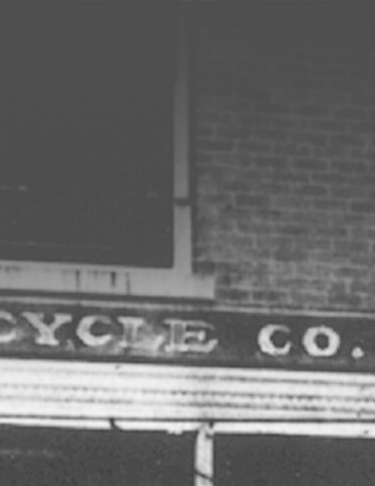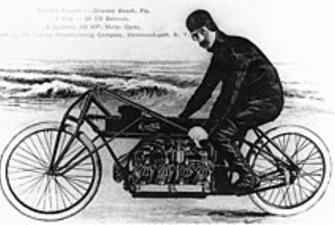
A Passion for Bikes Turned into so Much More
The immortal aviation pioneers, Wilbur and Orville Wright and Glenn Curtiss, first started on the path that led them to world-changing invention and innovation by running bicycle shops.

Changing the Course of History
At the end of the 19th Century, the recently begun bicycle craze caught the imagination of clever, mechanically inclined young entrepreneurs. The Wright brothers opened their bicycle shop, the Wright Cycle Exchange, in Dayton, Ohio in 1892. Eight years later, Glenn Curtiss opened his own bicycle repair shop in Hammondsport, New York. In their workshops, surrounded by their tools and caught up by the energy of the new century, these young inventors embarked on new discoveries that altered the course of history.
The Inner Tube Box
One anecdote from the Wright brother’s bicycle shop highlights how central this prototypical “garage shop” was in the development of man-powered flight.
Having experienced repeated crashes during their first experiments in glider flight, the Wright brothers were stymied in their efforts to effectively control and maneuver the aircraft in flight. One day in their bicycle shop, while nervously twisting a bicycle tire inner tube box, Wilbur came upon the solution they had been struggling so hard to find. The distorted cardboard box grasped in his hands brought to Wilbur’s mind the concept of “wing warping,” a method of physically reshaping the aircraft’s wings by pulling on cables to enable control over lift and attitude.
The profits from their bicycle business financed the Wright brothers' ongoing experiments, and it was at their bicycle shop that they crafted their experimental gliders, designed their first airplane, and built the wind tunnel that enabled them to test and improve the inventions that gave wings to humankind.

The Fastest Man on Earth
No less bold and curious was Glenn Curtiss. Given a bicycle at a young age, Curtiss parlayed the gift into both a business and an avocation. With his bike, he got a job delivering Western Union telegrams around town. He also entered bike racing contests, and soon became renowned as a champion racer. Pursuing his love of machines and speed, Curtiss opened a bicycle repair shop and manufacturing company.
Thanks to the popularity of his bicycle designs, Curtiss' company expanded with multiple locations around New York State. For Curtiss, it was a natural progression from self-powered transportation to the new technology of motorcycles. In 1902, he launched the G.H. Curtiss Manufacturing Company and began selling Hercules motorcycles.
In 1903, after traveling a mile in 56.4 seconds – a new world record - Curtiss was named the first American Motorcycle Champion. In 1907, he became famous as the “fastest man in the world” after reaching a top speed of 136.36 mph on a Daytona, Florida beach.
An Inspiration to Countless Future Engineers and Inventors
While less known and celebrated today than the Wright brothers, Glenn Curtiss’ exploits with two-wheeled speed helped to inspire the creation of the fictional hero, Tom Swift, the Boy Inventor.
Victor Appleton's novel,“Tom Swift and his Motor Cycle,” the very first in the long-lived popular series of books for young adults, was based on the speed-demon adventures and daredevil reputation of Glenn Curtiss.
Innumerable futurists and technologists have acknowledged the important role that these books played in their careers, including the great science fiction writer, Isaac Asimov, and Apple Computer co-founder, Steve Wozniak.